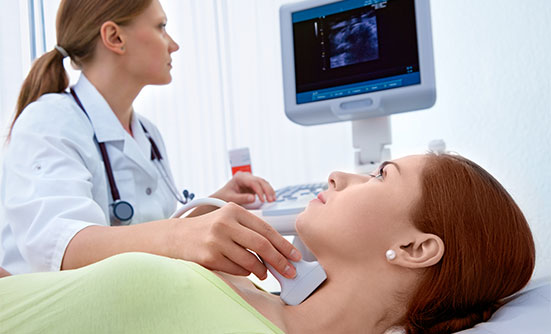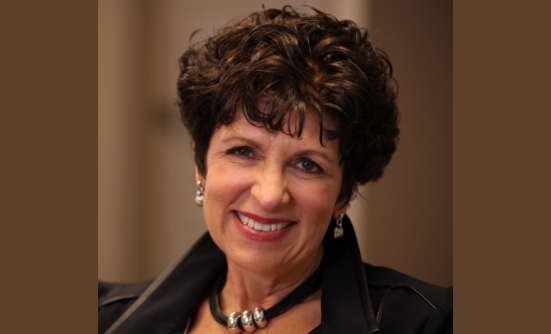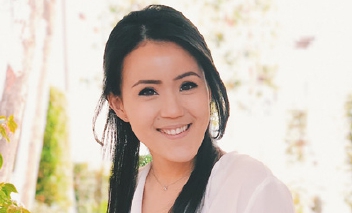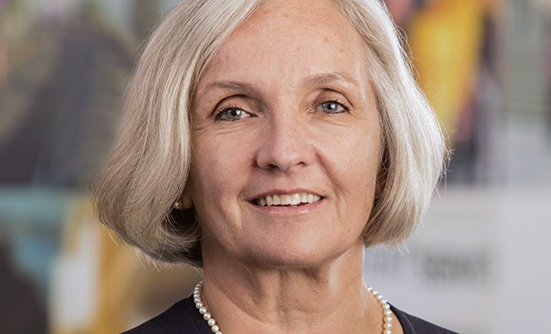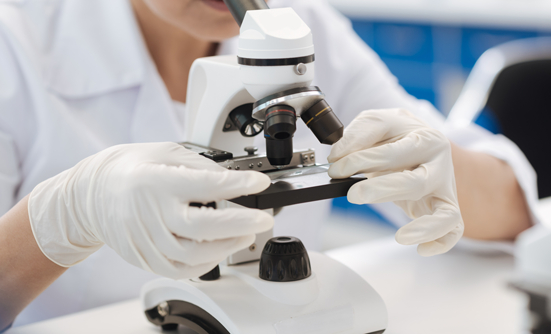In 2015, about 62,450 cases of thyroid cancer were diagnosed in the United States, and 1950 people died from this malignancy, according to the American Cancer Society. Thyroid cancer occurs when cells in the thyroid gland (which regulates hormones) begin to change and grow. Although most thyroid cancers can be cured at early stages, it is the most rapidly increasing cancer type in the United States, according to the American Cancer Society. It is not yet clear why the incidence of thyroid cancer is increasing so fast.
Types of Thyroid Cancer
The 2 most common thyroid cancers are:
- Papillary thyroid cancer
- Follicular thyroid cancer
These 2 types stem from differentiated tumors, which resemble normal cells and tend to grow very slowly. Papillary thyroid cancer accounts for 80% of all thyroid cancers, and follicular thyroid cancer comprises another 10% of thyroid cancer diagnoses. Both types can be treated successfully when detected early.
Other, more rare types of thyroid cancers are caused by poorly differentiated tumors, which lack the structure and the function of normal cells and grow uncontrollably, making these types of cancers much more difficult to treat.
Medullary thyroid carcinoma is a rare type of thyroid cancer that often spreads beyond the thyroid before it is discovered. This type accounts for 4% of all thyroid cancers.
In addition, anaplastic thyroid carcinoma, an extremely aggressive type of thyroid cancer, affects 1% to 2% of all thyroid cancer cases.
Risk Factors
Gender, age. For unknown reasons, thyroid cancer is 3 times more common in women than in men and is the fifth most common cancer in women. The risk for thyroid cancer diagnosis peaks earlier for women (in their 40s and 50s) than in men (usually diagnosed in their 60s and 70s). The majority (66%) of all thyroid cancer cases are found in people aged 25 to 65. About 2% of thyroid cancers occur in children and teens.
Radiation exposure. Exposure to moderate levels of radiation increases the risk for papillary and follicular thyroid cancer. Sources of radiation exposure may include x-rays done before 1950, radiation therapy for lymphoma, and radiation fallout from nuclear power plants (and atomic weapons).
Diet low in iodine. A diet low in iodine increases the risk for follicular thyroid cancer, which is a common scenario in developing countries. In America, iodine is added to most table salt and to other foods, so that the risk for follicular thyroid cancer is relatively low.
Genetics and Family History
Different types of thyroid cancer can be linked to the family history and inherited genes or other inherited conditions. For patients diagnosed with medullary thyroid cancer, 1 in 3 patients may be caused by changes in the RET gene that are passed from parent to child.
In addition, a family history of goiter (an abnormally large thyroid gland) or any family history of thyroid cancer also raises the risk for thyroid cancer.
Certain uncommon genetic conditions can specifically increase the risk for papillary and follicular cancer, including:
- Familial adenomatous polyposis syndrome
- Cowden disease
- Carney complex, type 1
- Familial nonmedullary thyroid carcinoma
Symptoms
The symptoms of thyroid cancer often resemble the signs of infection or other thyroid conditions that don’t involve cancer, so the symptoms may be mistaken for other conditions first. In some cases, no symptoms are present before the cancer is detected. The common symptoms of thyroid cancer include:
- Lump in the front of the neck
- Difficulty swallowing
- Difficulty breathing
- Hoarseness
- Pain in the throat or neck
- Persistent cough not caused by a cold
- Swollen glands in the neck
Diagnosis
There are many ways to diagnose thyroid cancer. Some common tests used to diagnose thyroid cancer, after a physical examination, include:
Blood tests. Several blood tests may be used during the diagnosis, treatment, and recovery of thyroid cancer. These tests will measure the levels of thyroid hormones, proteins, and antibodies (related to the immune system).
Biopsy. A small amount of tissue will be removed from the thyroid gland using fine-needle aspiration or surgery.
Imaging tests. To clearly see the thyroid gland and possible nodules more precisely, your doctor may use ultrasound, radioiodine scan, chest x-ray, CT scan, MRI, or a PET scan.
Disease Stage
Once diagnosed, the doctor will need to determine the stage of the cancer by looking at the tumor’s size and location, whether the tumor has spread to the lymph nodes, and how much, if any, of the cancer has spread.
As in all types of cancer, stages I and II are considered early disease that is easier to treat, and in stages III and IV the disease has advanced or has spread to other parts of the body and is more difficult to treat.
For papillary and follicular thyroid cancer, the patient’s age is also being considered in determining the disease stage. For anaplastic thyroid cancer, all diagnoses are stage IV.
According to the American Cancer Society, the 5-year survival rates for stage I and II papillary or follicular thyroid cancer are 100%; survival goes down in stage IV disease. For medullary thyroid cancer, survival rates are also close to 100% at stage I and II and go down at stage IV. Anaplastic thyroid cancer is always considered stage IV, regardless of when it is diagnosed and survival is low.
Treatment
The treatment options for thyroid cancer include:
- Surgery
- Thyroid hormone therapy
- Radioactive iodine treatment
- External beam radiation therapy
- Targeted drugs (that attack a specific target on the cancer cells)
- Chemotherapy
The choice of treatment may vary from patient to patient depending on the type and the stage of the disease.
Most patients with thyroid cancer will undergo surgery to remove most or all of the thyroid gland; they then have to take hormone replacement therapy for the rest of their lives. For papillary or follicular thyroid cancer, radioactive iodine therapy may also be used after surgery to destroy any cancer cells that were not removed by surgery.
Targeted drug therapy is the most effective treatment for medullary thyroid cancer, because hormone-based treatments are not effective against this type of thyroid cancer.
Recent Drugs Approved
In recent years, researchers have begun to develop drugs that attack 1 or more specific targets on the thyroid cancer cells. So far, 4 targeted therapies have been approved by the FDA in the past few years:
- Lenvima (lenvatinib) was approved by the FDA in 2015. Lenvima is used in patients with later-stage papillary or follicular thyroid cancer that has not responded to surgery or to radioactive iodine treatment
- Nexavar (sorafenib) is a targeted therapy that was approved in 2013 for later-stage papillary or follicular thyroid cancer or for recurrent cancer (that comes back) and the radioactive iodine treatment is not effective
- Cometriq (cabozantinib) is a type of drug called a tyrosine kinase inhibitor; it was approved in 2012 to treat metastatic (spreading) medullary thyroid cancer
- Caprelsa (vandetanib) is also a tyrosine kinase inhibitor and was approved in 2011. This drug comes in tablet form, and is now the standard treatment for medullary thyroid cancer that cannot be removed surgically, cancer that is getting worse, or cancer that has spread to other parts of the body.





